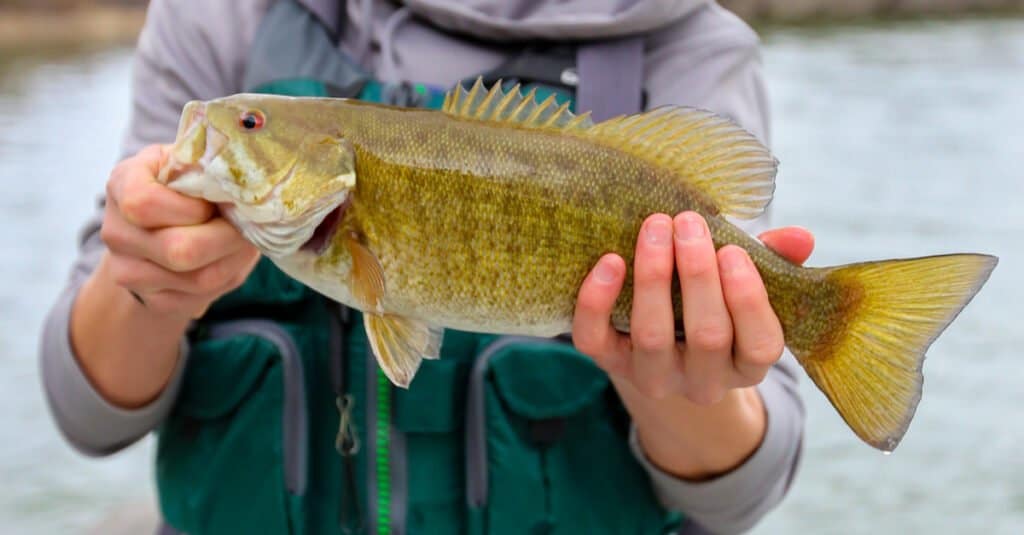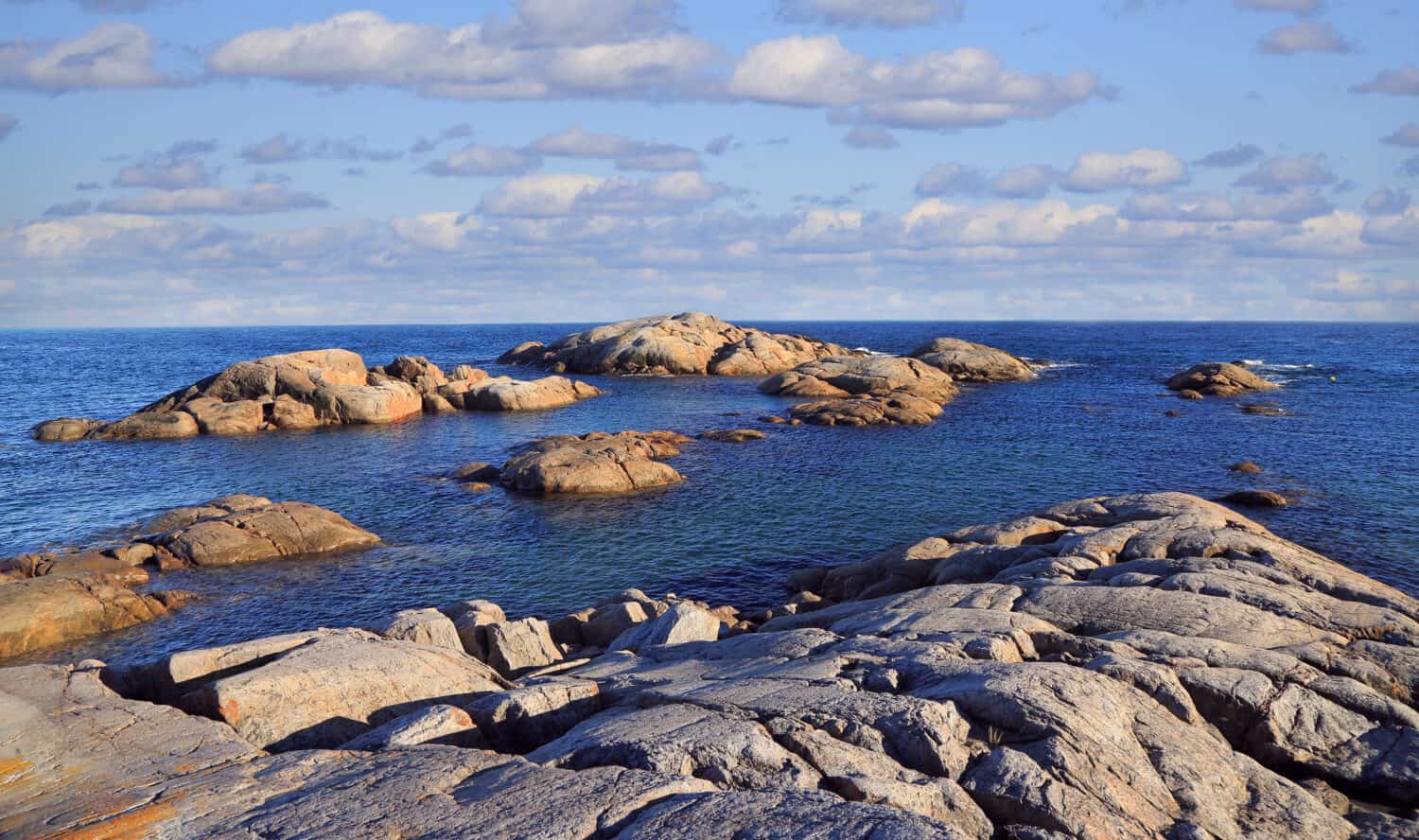The amazing Saint Lawrence River is a major waterway in North America. It connects the Great Lakes, located in the northern part of the United States and the southern part of Canada, with the Atlantic Ocean. It is also an important river in maritime shipping and played a major role in the expansion of trade in the area. The Saint Lawrence River even creates the boundary between the United States and Canada in some places.
Notable for its length as well as its role as a major shipping path, this river is also a popular fishing destination. You can do everything from bass fishing to ice fishing. There are also plentiful of beautiful outlooks, places to visit, and rich history in the region.
Saint Lawrence River History
The river has always been a major waterway that played a role in trade, diplomacy, and general living. Indigenous tribes settled around the river, which supplied a source of water as well as travel and food. Modern recorded history of the river as a factor in the trade that resembles its role today began in 1535. Jacques Cartier, an explorer from France, arrived in the area on the feast day of St. Lawrence, which he used as inspiration when naming the Gulf of Saint Lawrence and the Saint Lawrence River. Cartier was the first European to map the gulf and river.
With the increase in trade, as well as the need for an economical way to get goods from the Atlantic Ocean further inland, Canada and the U.S. began construction on the Saint Lawrence Seaway in 1957. The project was over 50 years in the making. Negotiations were lengthy and at multiple points, it seemed like the international project would not happen. But the benefits of having a navigable seaway from the Atlantic to the Great Lakes couldn’t be denied and the project moved forward.
The Saint Lawrence Seaway opened to maritime traffic in 1959. It is roughly 2,300 miles of maritime highway. The seaway is made of locks, which flood and drain to allow ships to reach new canals and move forward on the “highway.” There are also smaller canals that divert traffic around dams or other obstacles.

Ships traverse the Saint Lawrence Seaway.
©Russ Heinl/Shutterstock.com
Saint Lawrence River Activity
Maritime shipping makes up the vast majority of activity on the Saint Lawrence River. According to the Department of Transportation, over 2.5 billion metric tons of cargo have gone through the Saint Lawrence Seaway since it opened. Over 50 countries use the seaway and between 3,000 and 4,000 ships go through each year. When you consider that cold weather makes it impassable during a few months of each year, that amount of traffic is even more astounding!
The Great Lakes are adjacent to and mark the beginning of the river. The Great Lakes are a wonderful place to enjoy water sports, fishing, boating, and other outdoor activities. There are also numerous places to stay that offer everything from rugged camping to a glamorous lakeside resort. While not part of the Saint Lawrence River, the Great Lakes are a major attraction in the region.
The Saint Lawrence River is a wonderful place to go fishing. It is very long and has numerous small bays, tributaries, and other places to go fishing. Smallmouth bass and largemouth bass are both plentiful in the area. Northern pike, walleye, panfish, and yellow perch are all popular fish. In the colder months, there are places where you can go ice fishing. You will need a fishing license for the area where you are fishing, whether in the United States or Canada. You will also need to follow local regulations so make sure that you are familiar, especially if you will be close to the border between New York State and Ontario.

The Saint Lawrence River begins where Lake Ontario empties into the river.
©Michael J. Eves/Shutterstock.com
Saint Lawrence River Size
The Saint Lawrence River is around 800 miles long. There are three main sections of the river, although they all connect and have a continuous path from one end to the other. Even though it isn’t the longest river in Canada, the Saint Lawrence is one of the most famous and one that many people know.
The freshwater section goes from the beginning of the river at the mouth of Lake Ontario to near Quebec. After that is the Saint Lawrence Estuary. This section is brackish, a mix of fresh and salt water. The final section is the Gulf of Saint Lawrence, which empties into the Atlantic Ocean.

Rock formation in the Gulf of Saint Lawrence.
©Andriy Blokhin/Shutterstock.com
Saint Lawrence River Depth
The deepest point of the Saint Lawrence River is 250 feet deep. This river offers a way for large shipping vessels to travel east and west. During the design and construction of the Saint Lawrence Seaway, engineers made sure to consider the draft, or space needed to travel safely in the river, of ships when designing locks and channels.
One of the most amazing things about the Saint Lawrence River is not its depth but the change in elevation that occurs along its path. The river drops over 200 feet between where it begins at the Lake Ontario side and where it empties into the Gulf of Saint Lawrence.
Saint Lawrence River Source
The Great Lakes are the source of the Saint Lawrence River. Lake Ontario empties into the river but all of the Great Lakes make up the headwaters of the Saint Lawrence River. The Great Lakes Basin and the waters that empty into the Saint Lawrence River are over 25% of the world’s freshwater reserves. Not only is the river important to trade, the ecosystems created by the flow of water, fish, plants, and other species are crucial to the well-being of the planet.

Yes, smallmouth bass have small mouths! This is in comparison to largemouth bass, which have disproportionately big mouths that appear to gape.
©CSNafzger/Shutterstock.com
Saint Lawrence River Fish
Smallmouth and largemouth bass are some of the most plentiful fish found in the Saint Lawrence River. Many anglers go to the river to fish for these species. Northern pike is another fish species that the area is famous for. Ice fishing is best with northern pike and yellow perch. Muskellunge, catfish, walleye, and crappie also call this river home.
You can fish in just about any area other than direct approaches to ports. You should be careful and aware of large vessels going through the river. If you are less experienced or just want a knowledgeable guide, you can hire a charter service to take you fishing. Not only do they know the great places to find fish, but some help also arrange fishing licenses, gear rental, and other aspects of fishing the Saint Lawrence River.
Like with any fish, you should follow local regulations for the size and number of fish that you can keep. You can eat fish caught in the Saint Lawrence River but there are advisories or limitations recommended in some cases. Fortunately, New York State provides plenty of guides to fishing the Saint Lawrence River and other tributaries and lakes in the region.
It is important to note that you need a fishing license for the United States and Canada if you fish in their waters. In some areas, the river makes the border between the two countries. In this case, it’s best to have a fishing license in each, just in case you end up on one side or the other.

Rock formations in the Saint Lawrence Estuary region.
©Vlad G/Shutterstock.com
Saint Lawrence River Geology
Amazingly, one of the previous landmarks that occupied the same space as the Saint Lawrence River was another major body of water. Between 13,000 and 9,500 years ago, the Champlain Sea flooded a large area. Current geological formations show that the earth shifted and cut off the Champlain Sea from the Atlantic Ocean. The Saint Lawrence River, its tributaries, and other small lakes and waterways were created. Now, they are the only remnants of the Champlain Sea.
There were a lot of mines and quarries in the region and many are still in operation today. Even though many have closed, mining and geology are major parts of Saint Lawrence’s history. For example, there are many historic homes and buildings that have rocks mined from the Saint Lawrence area. Granite and marble are plentiful in this region. Iron, pyrite, and galena can all be found. In addition to exploring historic buildings, you can also visit museums of local history, including Gouverneur Museum in Saint Lawrence County, New York, to see collections of locally mined rocks and minerals.
The photo featured at the top of this post is © bulbspark/Shutterstock.com
Thank you for reading! Have some feedback for us? Contact the AZ Animals editorial team.







